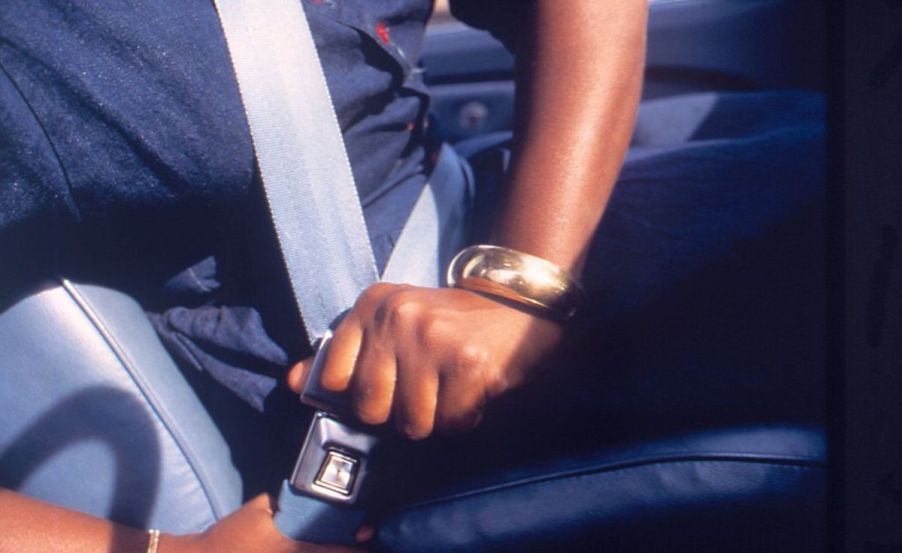
How the Former Tata CEO’s Death Is a Grim Reminder to Wear Your Seat Belt
Modern vehicles come with all sorts of car safety features, including seat belts and airbags. Every year, numerous people either lose their life or get seriously injured in car accidents all because they weren’t following proper safety procedures while driving or riding in a vehicle.
The recent death of the former Tata CEO, who reportedly wasn’t wearing his seat belt, got us thinking about these safety restraints. When did they become a thing in America, and what’s the truth behind some of the more common myths about them?

The death of Cyrus Mistry, former Tata CEO
Cyrus Mistry was the former Tata Group CEO, who had recently lost his father three months prior. He was traveling with one of his friends, Jehangir Pandole when the accident occurred. The pair were traveling with Pandole’s brother and his wife, who was driving the vehicle on the bridge of a busy highway approximately 60 miles north of Mumbai.
An investigation revealed that the pair were riding in the back seat of a Mercedes-Benz and reportedly weren’t wearing seat belts. Charges were brought up against the driver, Pandole’s sister-in-law, for what investigators claimed was rash driving on a public road, according to The Hindu.
Pandole’s brother, who was hospitalized for his injuries, states his wife tried to merge from the third lane on the bridge to the second, but couldn’t. The path they were traveling became narrow and the car ultimately hit a railing, killing Pandole and Mistry.
Mistry had been on Tata Motors’ board since 2006 but became chairman in 2012. He was removed in 2016, though. He fought the removal in court and lost because one of the judges stated the shareholders had lost confidence in his performance.
Tata, known for making Land Rovers, was a family-run business, but Mistry became the first non-family member to lead the company, according to the New York Times.
How have seat belts evolved in the last century?
Seat belts have been around for much longer than most people realize. It just began in a crude form. Back in the late 1800s with horse-drawn cabs, people would use straps to stay in place while riding across town or the countryside. It wasn’t seen in a gas-powered vehicle until the ’40s and ’50s when racing cars implemented the lap belt form.
By 1959, a 3-point seat belt was invented, which was inspired by the 4-point harnesses seen with airplane seats. Nils Bohlin, the inventor, worked for Volvo at that time and he came up with this creation because Volvo’s CEO had lost a relative in an accident and wanted to make changes to increase safety in the company’s vehicles.
Car manufacturers began using seat belts on a more frequent basis in 1966, but they didn’t become a fixed part of the automobile until 1995 when almost all states in the country had a seat belt law. NHTSA reports that these restraints save about 15,000 lives a year, so buckling up is one of the best ways to stay safe while driving. Nowadays, seat belt use has expanded to include our furry friends as well.
The truth behind some seat belt myths
According to NHTSA, one of the most commonly believed myths about seat belts is that they will hurt you in an accident so you shouldn’t wear them. While it’s true it could cause harm, so could just about everything else in the vehicle. The seat belt is one of the very few items that can also help save your life or greatly reduce injuries.
Also, some people really think that if you drive a pickup truck, it isn’t necessary to have a seat belt engaged, which just isn’t true. Just because pickups are bigger and heavier than cars, doesn’t mean you won’t get injured in a crash. It will happen no matter what type of vehicle you drive, so buckle up and stay safe.
Another cause of concern for seat belt wearers is the idea that they may be trapped when going underwater or if a fire breaks out in the vehicle. The NHTSA reports that wearing a seat belt is safer because if you’re unrestrained and go unconscious, you’re not going to be able to get to safety. Wearing the restraint increases your chance of staying conscious and getting help.
A powerful businessman, Cyrus Mistry, might’ve been spared the horrific death if he had worn a safety belt on that fateful September day in 2022. The lesson we can garner from this, though, is to be sure we’re wearing our seat belts every time we get in a car, no matter which seat we may be sitting in.


